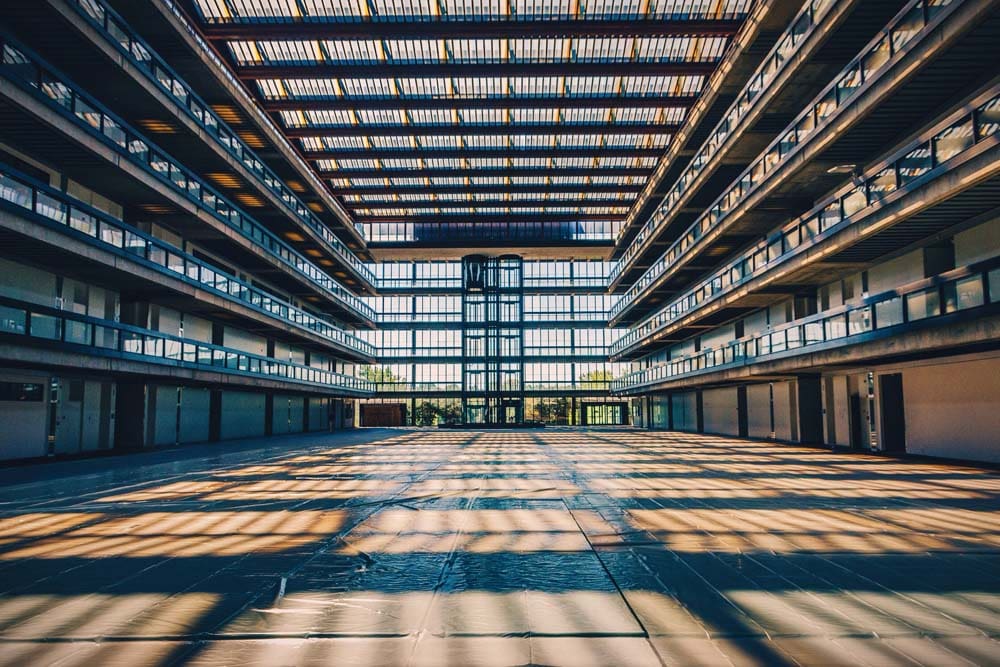Signing the lease on a warehouse represents a major commitment. Every single detail of the lease and indeed the property itself must be considered very carefully. Obvious perhaps, but the excitement or relief of finding the right property can cause tenants to overlook details that could cost them dear in the future.
This makes it important that the negotiation of any lease is handled calmly and dispassionately, with the support of experienced advisers, who will consider every aspect of the lease, including
the following.
Location and access are critical
When leasing a warehouse consider the access. Does the warehouse come with limited hours when it can be accessed? Does it become inaccessible at weekends or outside normal office hours? Any restrictions could limit growth or efficiency and must be considered carefully.
Physical access to the warehouse is linked closely to its location. Will your business require space for cars, vans and lorries to access the warehouse? Is this space available and easily accessible? If vehicles need to be loaded and unloaded inside the warehouse, you’ll require access to loading doors. If not, you shouldn’t pay for access that won’t be used.
Ensure the conditions of the lease cover access to not just the internal space of the warehouse, but all the external space you’ll need (i.e., parking). If your business requires goods to be shifted in and out of the warehouse regularly, location is critical as are links to wider transport infrastructure.
Is VAT payable on rent and service charges?
Many commercial properties are VAT exempt, but this shouldn’t be assumed as the landlord has a right to charge VAT at the standard rate on rent. Once charged on rent it must also be charged on other costs such as maintenance fees or service charges.
If you, as the tenant, are VAT registered then you may be able to claim the VAT back at a later date, but the 20% charge must be included in any outgoings calculated, until the tax can be reclaimed.
If you are not registered for VAT and cannot reclaim the money, you may be able to negotiate a reduction in the overall rent paid to balance out the tax.
What utilities are included in the lease?
Some landlords may provide utilities such as gas, water, electricity and broadband in the lease, but this can’t be assumed. So, ensure you understand exactly what is included and what you have to source, whilst checking the utilities provided will be sufficient for you to run your business.
What repairs will you be responsible for?
Repairs you will be responsible for fall under one of two categories – Fully Repairing and Insuring (FRI) and Internal Repairing and Insuring (IRI). An FRI lease means you are responsible for maintaining and repairing the internals and externals of the warehouse, whereas an IRI lease means only internal repairs and maintenance will be your responsibility. The nature of the lease could also affect your insurance premiums.
How quickly can I move into the premises?
You need a set day upon which you can move into the warehouse and start running your business. If the landlord mentions a date, pin them down to confirming this date is after any repair work, cleaning etc. has been completed and when any necessary utilities are ready.
Is there a rent-free period?
There will be circumstances when landlords feel an initial rent-free period represents a sensible investment on their part, offering it as part of the marketing for a property/estate to encourage prospective tenants concerned about start-up costs, or for a warehouse with major ‘fit-out’ costs.
The landlord hopes a short rent-free period at the start will make a tenant feel more confident in signing, safe in the knowledge you can invest in getting your business rolling.
Does the lease include a break clause?
A break clause enables the tenant or landlord to terminate the lease early, upon reaching a specific point, such as 30 months into a five-year lease.
If a break clause is to be included, you must understand fully the conditions upon which it can be served, including the time frame, method of serving, required signatories, the place it must be served to and the condition of the property.
Getting any of these wrong could invalidate the break clause at a cost of tens of thousands of pounds.
Does the tenancy fall under the 1954 act?
Most tenancies fall under the Landlord and Tenant Act 1954 Part II, which offers security of tenure and an automatic right to renew at the end of the lease. There are only a few circumstances under which a landlord can fail to renew a tenancy which is ‘Inside the Act’.
A landlord can opt to take the tenancy ‘Outside the Act’, meaning the tenant must vacate when the lease expires, unless a new lease has been agreed. This should be mentioned in the lease, stating that the lease is outside the provisions of section 24-28 of the Landlord and Tenant Act 1954 Part II.
Even for experienced tenants, agreeing a lease can be difficult and simple errors at the start can be compounded in the future, resulting in unnecessary additional costs that could have been avoided with the right advice from specialist commercial real estate lawyers.
Tanveer Ranshi is a Solicitor in the Commercial Real Estate team at Taylor Walton Solicitors and can be contacted on 01582 731161 or at tanveer.ranshi@taylorwalton.co.uk














